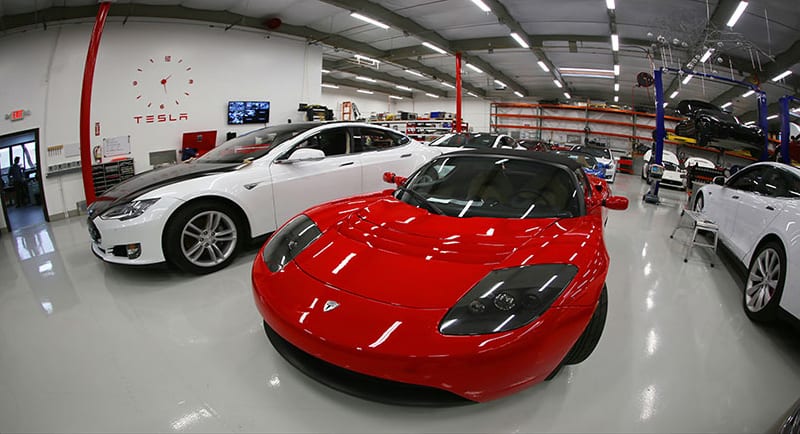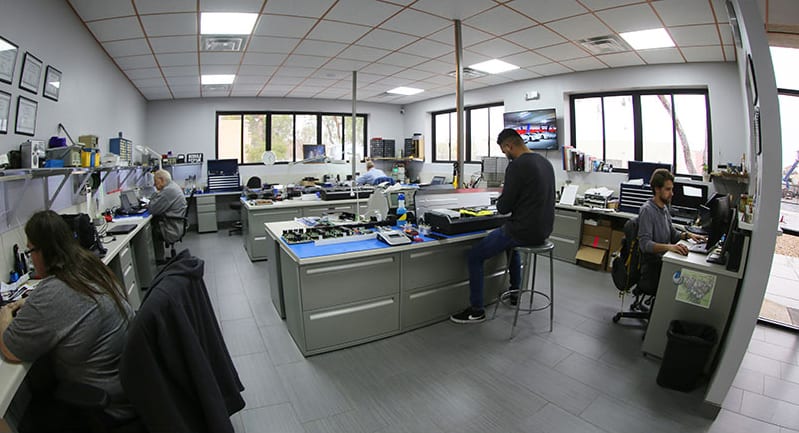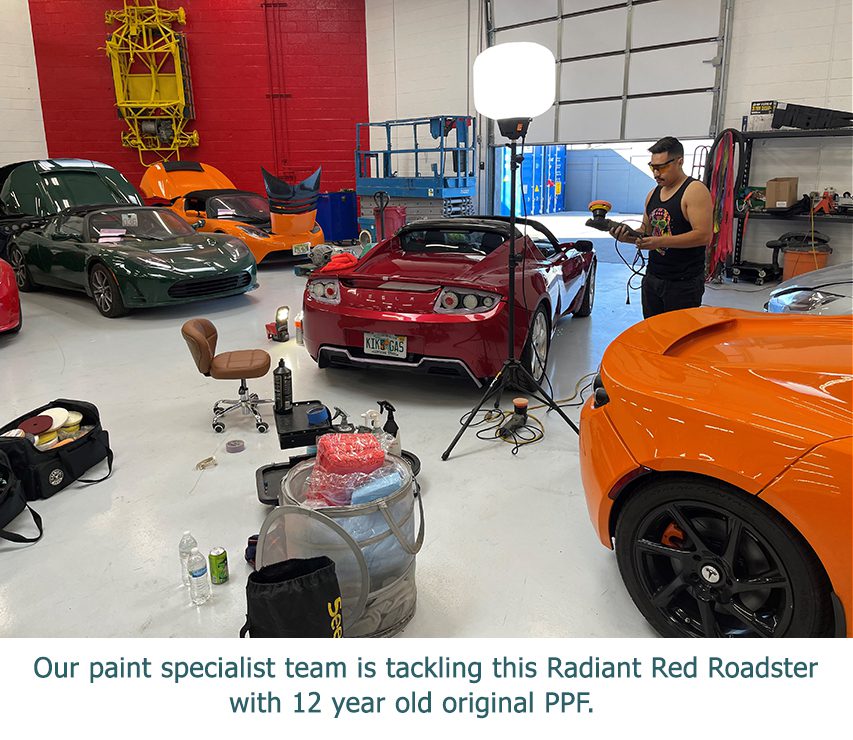
Tesla Roadster
PPF Removal
Tesla Roadster PPF Needs to be Replaced Over Time.
Some Tesla Roadsters came from the factory with optional Paint Protection Film (PPF) applied to vulnerable areas like the front clip or fender faces. A few early VIN Roadsters, like our VIN #5, had PPF that a UK vendor etched a small “Tesla Logo” relief on the corners, which for some may be considered a collectability preservation item. We advise against leaving it in place.
Due to the PPF age deterioration, and inevitability of paint damage, like we will go into more detail with below with the Radiant Red Roadster in this tech tip, it may be advisable to forego leaving original PPF on the cars, in favor of avoiding future repaint issues created by the aging PPF adhesive crystallizing and bonding with paint layers.
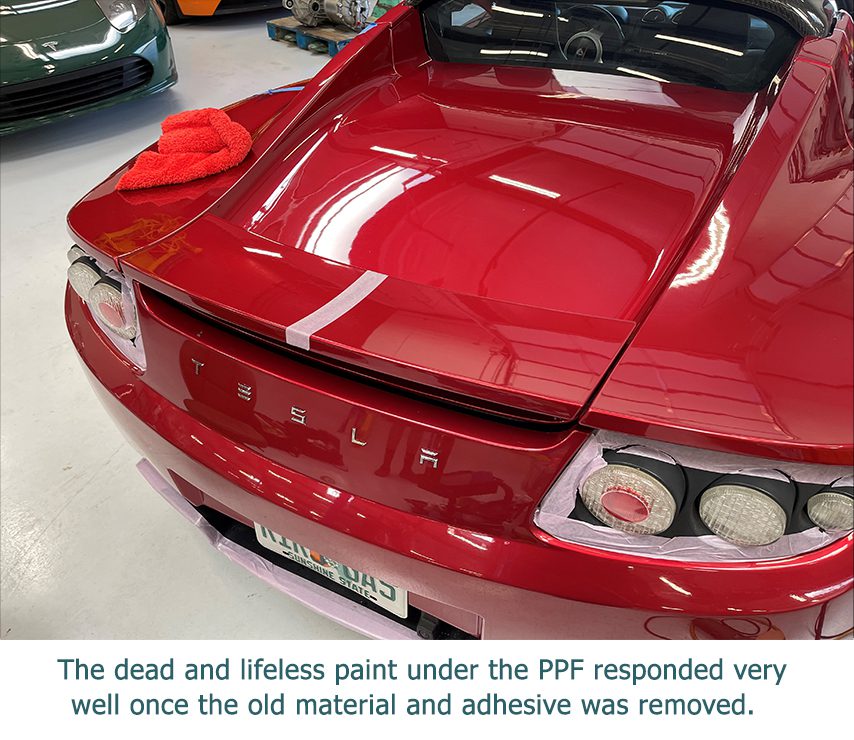
The life of PPF material is around 5-10 years dependent on storage conditions and exposure to UV. Some Roadsters still have PPF applied 14 years ago, and if the car spends a fair amount of time outdoors, and is not regularly cleaned, much of the horizontal original PPF is end of life.
If the Roaster PPF option was not selected at the time of purchase from Tesla, owners often had this protective film applied by shops of their own selection, after purchase or during ownership.
As the name implies, this is a protective film, designed to protect and preserve paint.
PPF is the first line of defense against rock chips, and if it did not penetrate through to the paint and primer surface, is much less expensive to repair by replacing a smaller section of PPF, than a repaint.
The protection offered by PPF application not only saves paint during its life span of 5-10 years, but newer PPF versions like 3M and Xpel brands provide self healing properties, able to resolve minor scratches by merely leaving it out in the sun for a while, and you are back to a high gloss shine that makes the surfaces look like they just came back from detailers with a permanent wax finish.
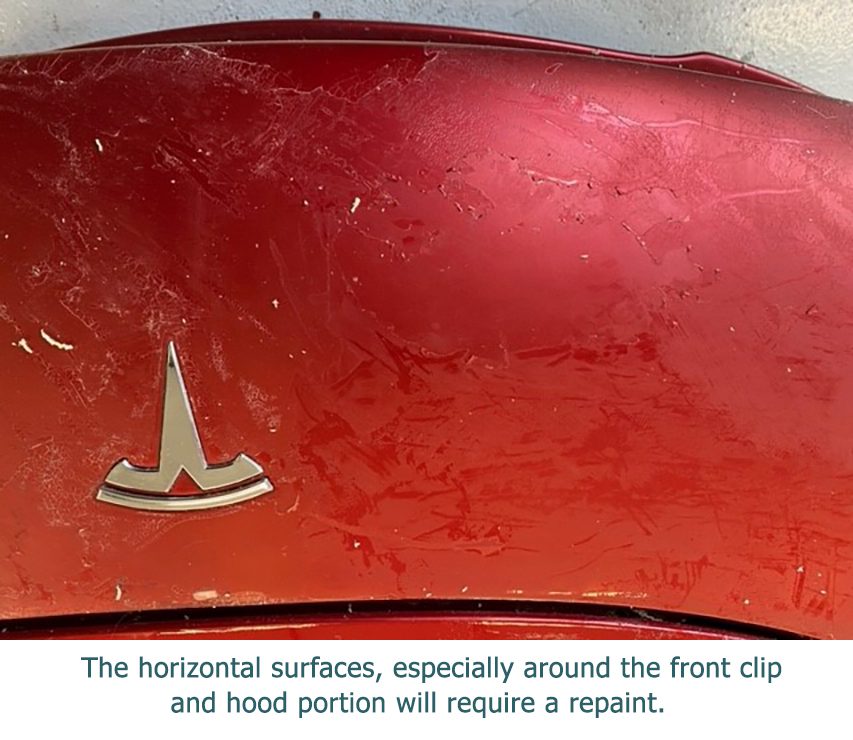
So, what does PPF that needs to be replaced look like?
We were surprised to find certain colors deteriorate the PPF faster than others. Apparently, the red colors absorb the most UV, which is a PPF killer. In the Roadster world, this would by Fusion Red, and Radiant Red.
If you wait too long, like this Radiant Red customer did with brittle, cracking, and dull PPF, removal may no longer be possible without some damage to paint.
Although we were able to remove the old PPF layers and adhesive on 80% of the car, some of the areas like the front clip had PPF adhesive that had crystallized, and bonded with the paint surface clear coat, and now requires a front bumper repaint.
The vertical surfaces seemed to respond to removal with some heat applications, and strong adhesive removal chemicals, until we go to the horizontal surfaces which received the most direct UV exposure.
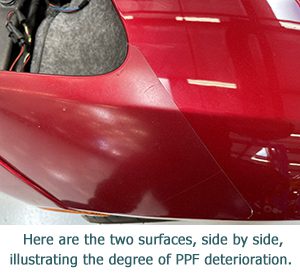
The problem now became adhesive crystallizing and bonding with the final paint clear coat, to the point where it was no longer possible to separate PPF removal from paint. This Roadster will now require portions of the hood and front bumper body work and repaint.
What about Yellowing PPF?
Like most products on the market, improvements are made as a product ages and age-related design flaws are revealed. PPF yellowing, most pronounced in the Tesla Roadster Arctic White version, is a common problem we see in our Service Center as Roadsters age.
Few Arctic White Roadsters show up anymore without noticeable signs of yellowing PPF, especially noticeable where PPF and Arctic White surfaces meet like around side view mirrors, or partial fender application.
To the left is a front hard top section with only partial PPF.
PPF replacement with some of the newer yellowing resistant PPFs is really the only solution.
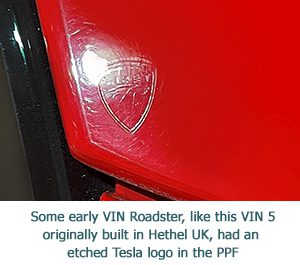
We recommend:
1 – Proactively replace PPF every 10 years
Especially if it is beginning to show signs of color shift (Yellowing), dulling, and will no longer respond to buffing or waxing.
2 – Maximize protection with a ceramic coating over the PPF
PPF and ceramic are both hydrophobic, which basically means they have a water-shedding surface. This translates to greater overall durability for PPF, and deep shine for ceramic coating. The PPF provides a serious, self-healing protection against UV rays, corrosives, scratches and impact damage such as rock chips.
The ceramic coating provides defense against UV rays, corrosives and scratches with a slick, glassy finish.
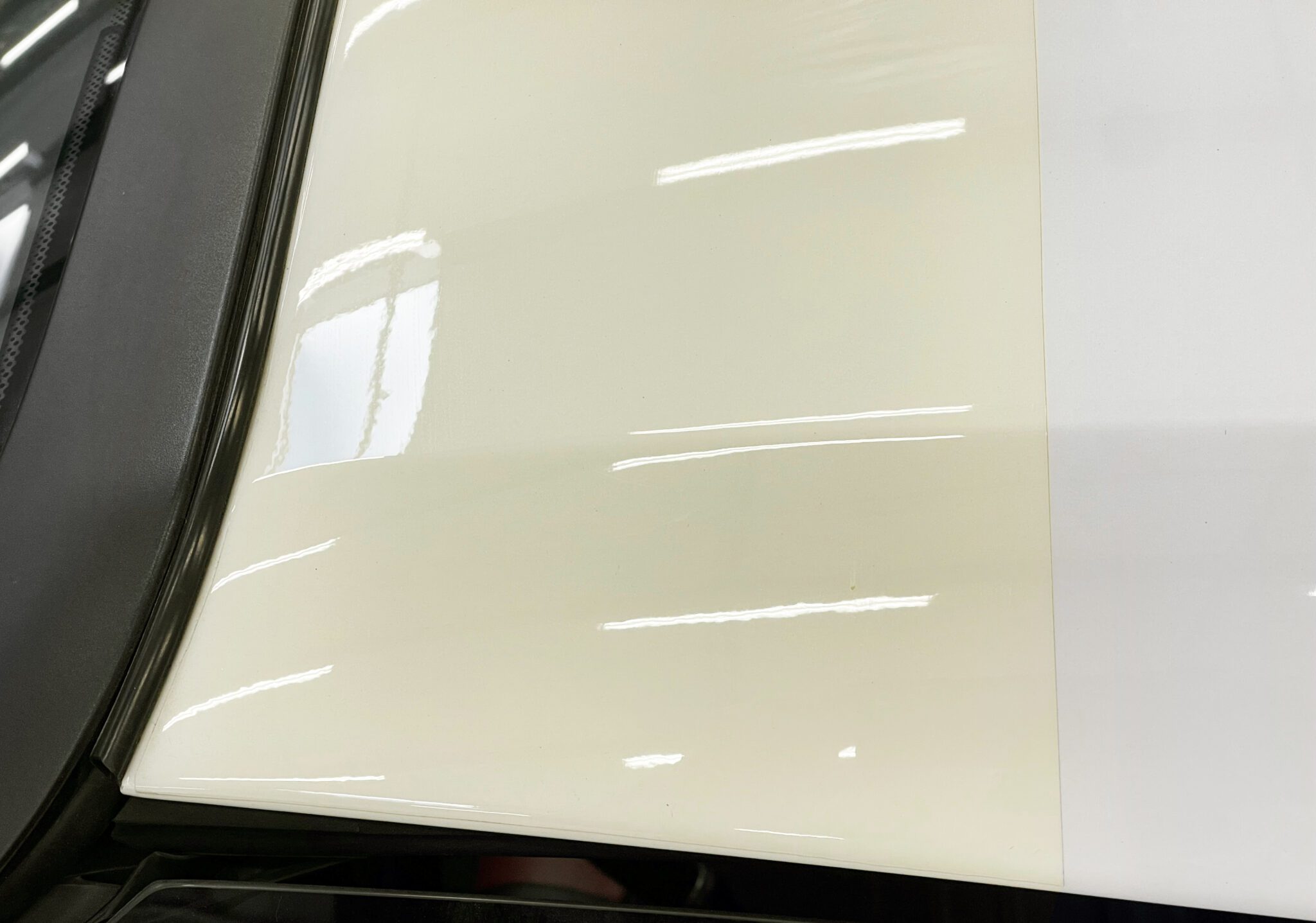
3 – Do not pressure wash your Roadster
To avoid the PPF film from pulling away for the painted surfaces, of developing fissures or pockets under the PPF, stay away from high pressure washing methods. Avoid automated car washes with spinning brushes. You never know who was in line ahead of you, and if it was a 4 wheeler getting mud and abrasive debris removed. Some of this remains in the brushes and will scratch your finish.
Additional tip
You do not need to send your Roadster cross-country to get your PPF replaced or repaired unless you are combining it with other Roadster deferred maintenance such as getting your PEM upgraded and rebuilt, or other Roadster specific repairs like ESS Battery Pack recovery or repairs.
Shop local PPF shops. Look at their customer reviews and reputation, length of time in business, and make sure to visit their shop to see their work. The majority of mature PPF businesses are well versed in old PPF removal.


